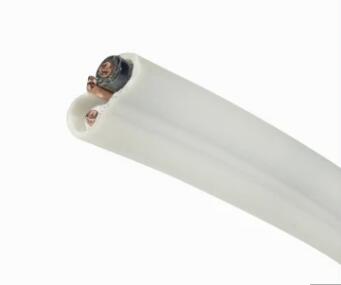Wired for Home: A Closer Look at the Construction of Residential Electrical Wires
2023-12-05
Introduction:
Behind the walls of our homes, an intricate network of electrical wires weaves a silent tapestry, powering our devices and lighting our spaces. While the functionality of these wires might seem straightforward, their construction is a carefully orchestrated process. In this blog post, we'll unravel the layers and components that make up a typical electrical wire used in residential wiring, shedding light on the key elements that ensure safety, efficiency, and reliability.
1. Conductive Core: The Heart of the Wire:
- Material:
- The core of an electrical wire is typically made of copper or aluminum, both excellent conductors of electricity. Copper is the most common choice due to its high conductivity and resistance to corrosion.
- Stranding:
- The conductive core is often stranded, meaning it consists of multiple smaller strands of wire twisted or braided together. Stranding enhances the flexibility and durability of the wire, allowing it to withstand bending and movement.
2. Insulation: The Protective Shell:
- Material Selection:
- The insulation material serves as a protective barrier around the conductive core. Common insulation materials include PVC (polyvinyl chloride), THHN/THWN (thermoplastic high heat-resistant nylon-coated), and others, each chosen for specific applications based on factors like temperature resistance and flexibility.
- Color Coding:
- Insulation is color-coded according to industry standards for easy identification of the wire's purpose. For instance, white is often used for neutral conductors, black or red for hot (phase) conductors, and green or bare copper for grounding conductors.
3. Jacketing: The Outer Armor:
- Material and Purpose:
- A layer of jacketing, typically made of PVC, nylon, or other durable materials, encases the insulated conductors. The jacket provides additional protection against physical damage, moisture, and environmental factors.
- Sunlight Resistance:
- In outdoor or exposed installations, jacketing may include additives to resist damage from ultraviolet (UV) rays, ensuring the wire's longevity in sunlight-exposed areas.
4. Grounding Conductor: A Path to Safety:
- Role and Construction:
- In residential wiring, a grounding conductor is included for safety. This conductor, often made of bare copper, provides a path for fault currents to flow safely into the ground, reducing the risk of electric shock and mitigating potential damage.
- Bonding with Grounding System:
- The grounding conductor is connected to the electrical system's grounding system, including ground rods or other grounding electrodes, establishing a secure path for fault currents.
5. Additional Features:
- Fire Resistance:
- Some wires, especially those used in critical areas or in commercial buildings, may have fire-resistant features. Fire-resistant wires are designed to maintain functionality even when exposed to fire, helping to prevent the spread of flames.
- Low Smoke and Halogen-Free:
- Certain wire constructions prioritize low smoke and halogen-free properties. This is especially important in enclosed spaces, where the release of toxic fumes during a fire can pose health risks.
Conclusion:
The construction of a typical residential electrical wire is a testament to the marriage of functionality and safety. From the conductive core that conducts the lifeblood of electricity to the layers of insulation and jacketing that protect and shield, each component plays a crucial role in ensuring that our homes are wired for efficiency, durability, and, above all, safety. As technology advances, so too does the evolution of wire construction, promising even more efficient and reliable electrical systems for the homes of the future.



